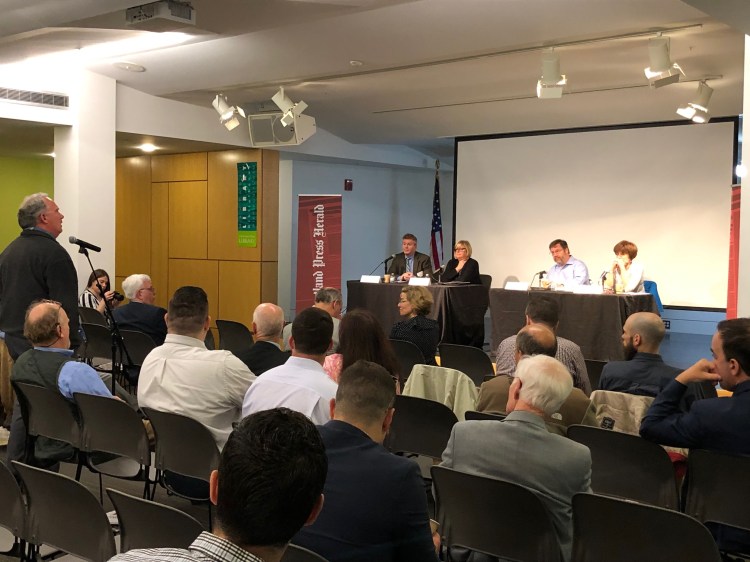Among the things Maine needs most to extend broadband service – especially to the one-third of the state that is underserved – are highly motivated people within their own communities who will champion the push for service, and support from a local government that understands the economic benefits of information technology.
That was the consensus among three industry veterans who shared their expertise at a Press Herald Business Breakfast Forum on May 22 at the Portland Public Library. Tracy Scheckel of Otelco, Peggy Schaffer of the ConnectME Authority and Fletcher Kittredge of GWI examined ways high-speed internet service can be brought to more remote parts of the state. The event, moderated by business reporter J. Craig Anderson, produced these other takeaways:
– Maine needs more state money for grants to kick start local and regional broadband projects. Schaffer said federal grants are available but difficult to obtain (one application form is 250 pages long). ConnectME has a budget of about $750,000 for broadband expansion grants, but it is a drop in the bucket of what is needed.
– Next-gen “5G” wireless technology is not likely to help solve rural broadband problems because it requires high-density cell tower distribution, which providers are not likely to build in remote parts of the state. It won’t be cost-effective for carriers to bring 5G to rural areas for many years to come.
– The desire within rural communities to set up their own municipal broadband services is “contagious.” When one does it, neighboring towns see the benefits and want to establish their own services. Scheckel said Otelco is working with Penobscot County’s Alton (pop. 890), where the town meeting approved money for a broadband network, and nearby Argyle (pop. 277) got wind of it and became interested in building a network there, too.
– While rural parts of the state need attention, it’s good to keep in mind that existing systems need to be updated. Broadband technology is constantly changing, said Kittredge, so good broadband service is more than just stringing fiber and connecting homes. Existing networks need investment, too.
Send questions/comments to the editors.


